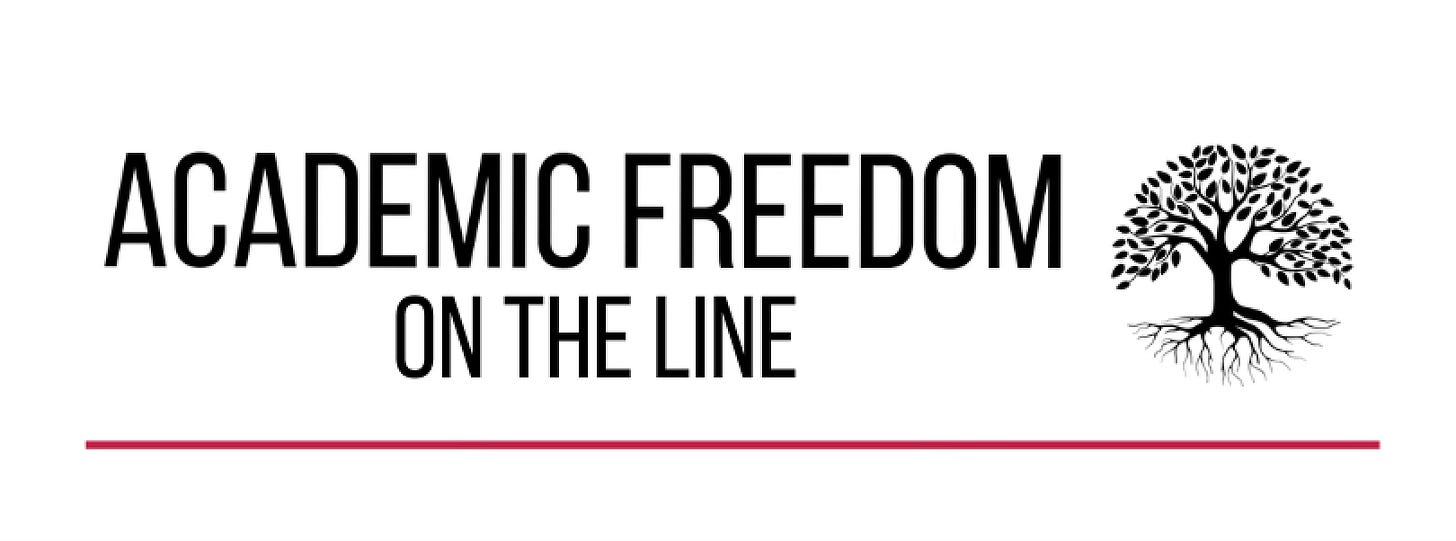How Should We Respond to Executive Power Abuses
Executive Power Watch, a growing resource from the Center for the Defense of Academic Freedom
The first month of the 2nd Trump Administration has birthed a flurry of activity emanating from the executive branch, directly targeting educational institutions and academic freedom. This has created uncertainty and concern, and we believe we can help.
One of the strengths of the Center for the Defense of Academic Freedom (CDAF) is that we are a collection of individual scholars, administrators, and activists who bring different perspectives and areas of expertise to the challenge of protecting academic freedom.
We have lawyers, historians, leaders of organizations, experts in institutional and governmental operations, and also me. (We’re still trying to figure that one out, but I’m happy to be included.)
Because of this diversity of talent and expertise, we felt that the CDAF was well-positioned to create and disseminate information on relevant executive actions so that people both inside and outside educational institutions can be better informed on the meaning and impact of the executive orders, while also providing resources for resisting orders that threaten the institutional mission.
Executive Power Watch, as part of the work of the Center for the Defense of Academic Freedom, is designed to provide rapid-response, easily accessible information for a better understanding of what actions and proclamations coming from President Trump do and don’t mean.
The first group of Executive Power Watch documents is focused on this surge of executive orders.
It’s important to recognize what executive orders are and are not. They are issued by the executive branch, and, in the words of the American Bar Association, are properly viewed as a “directive from the President of the United States that manages operations of the federal government.” They are not legislation and, to be lawful, must be consistent with existing statutes. Part of the purpose of the flurry of these EOs is to create confusion and tie up institutions as they attempt to respond.
Each Executive Power Watch document is constructed around answering important questions:
What is the policy?
How does it affect campus communities?
Who else is under attack?
Who benefits?
What can you do/How do we fight back?
Each EP Watch document also concludes with links to additional resources.
The documents are all short, easily accessible, and printable for public distribution. Below is a screenshot of the Executive Power Watch document for the Trump EO weaponizing Civil Rights Law.
The entire current collection of Executive Power Watch documents can be found on the CDAF Publications page. Here are direct links to currently available EP Watch documents. We’ll update this list as more are released.
Executive Order: Banning Ideas and Concepts in K-12
Executive Order: Privatizing K-12 Education
Executive Order: Weaponizing Civil Rights Law
Executive Order: Diversity, Equity, Inclusion, and Accessibility
Executive Order: Gender Identity
If you have any questions about these Executive Orders, or the EP Watch documents, let us know, and we’ll do our best to have one of the CDAF fellows1 provide an answer.
The views expressed in this newsletter are those of individual contributors and not those of the American Association of University Professors (AAUP) or the AAUP’s Center for the Defense of Academic Freedom.
This round of Executive Power watch documents is the result of collaborative work by CDAF fellows Tariq Habash, Liz Montegary, Sumi Cho, Nancy MacLean, and CDAF director Isaac Kamola.








This is fanatastic